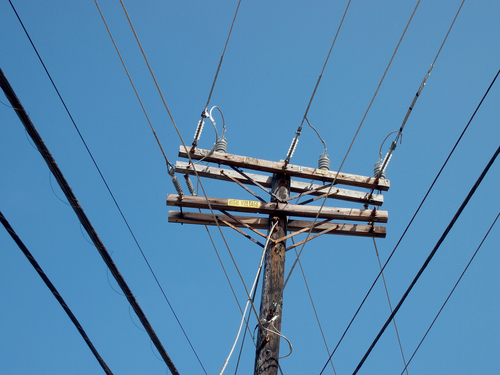Exposure to overhead power line hazards is not limited to employees of electrical utilities—workers in industries like construction and agriculture can also be exposed to them. If workers could violate the required clearances around the power lines, make sure they’re informed about the power lines and the work practices that are required to keep them safe.
Workers can come into contact with high-voltage lines—power lines carrying a sustained current greater than 600 volts—when they:
Use elevating equipment, like dump trucks, backhoes, or cranes. Carry long conductive objects like irrigation piping or ladders. Work at elevation, from ladders and scaffolds or in bucket trucks.
But employees who don’t work for electrical utilities may be less informed or equipped to deal with high-voltage hazards. Here are some questions all workers should ask before they begin working outdoors, if they could be exposed to overhead power line hazards. —————– Interrupter Enpro Sponsored Webinar TBD 9/30 —————– What Are the Hazards? When workers are near overhead power lines, they may be exposed to hazards that include: Electric shock. Direct contact with live electrical current results in electric shock, which can kill or injure. Electrocution. Electrocution occurs when a worker receives a powerful enough electric shock to kill. Electrical burns. A person who comes into contact with electricity but is not electrocuted may suffer electrical burns on the skin or internally. Arc flash. Electricity can arc through the air to reach a conductive object. Sometimes an arc produces an explosion—known as an arc flash or arc blast—powerful enough to melt metal and ignite clothing and flesh.
Where Are the Power Lines? To stay safe, identify all overhead power lines in or near the work area before employees begin working. Make power line locations readily apparent by: Using caution tape and signs to cordon off the area under power lines. Forbidding storage of materials under power lines. Installing flagged warning lines to mark horizontal and vertical power line clearance distances.
How Powerful Are the Power Lines? The voltage the power lines carry will affect the distance that workers and their equipment must maintain from the lines. Contact the electric utility that owns the lines to confirm the operational voltage of an overhead power line. Generally, there are three types of lines: Transmission lines (which typically carry more than 69,000 volts of current) Subtransmission lines (which carry from 34,500 volts to 69,000 volts of current) Distribution lines (which carry less than 34,500 volts of current; 13,800-volt distribution lines are common). —————– Interrupter Enpro Sponsored Webinar TBD 9/30 —————– What Safety Precautions Should I Take? Workers should treat all overhead lines as if they are energized until the electric utility indicates otherwise, or an electrician verifies that the line is not energized and has been grounded. Precautions that can be taken against exposure to overhead power lines include: Ask if the utility company can shut off the lines while employees are working near them. Always verify that this has been done; never assume. If overhead lines cannot be shut down, ask the utility company if they can install insulation over the lines during the time employees will be working near them.
In Part II, we will answer the questions Why do I have to observe clearance distances? and How far do I have to stay from power lines? |

